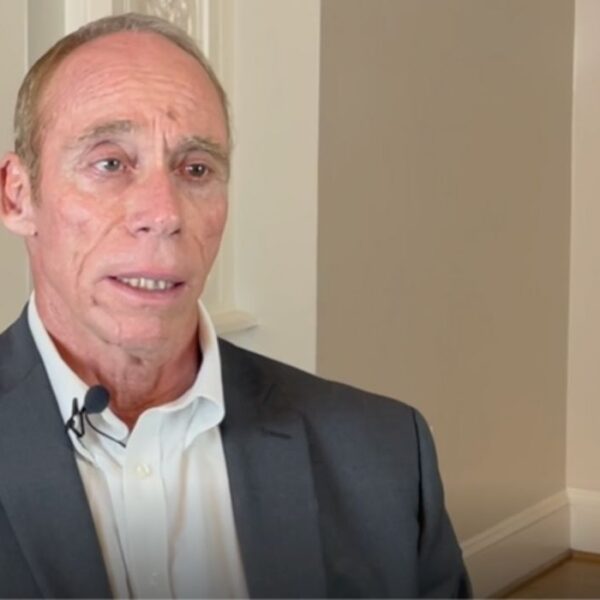
What is August really about? Owen Lamont, Senior Vice President and Portfolio Manager at Acadian Asset Management, suggests that for normal people, it’s about relaxing on the beach, but for financial markets, it’s “panic season.”
Lamont, who is a leading economist at the $150 billion quantitative hedge fund and has been a faculty member at Harvard University, Yale School of Management, University of Chicago Graduate School of Business, and Princeton University, looked back at financial history, and found a startling pattern. “Even if systematic equities aren’t your thing,” he wrote on his Acadian blog, Owenomics, “you need to be mentally prepared for an epic financial disaster over the coming three months.”
His research draws a direct line between the timing of many of the most devastating financial crises and a centuries-old pattern: market crashes tend to cluster during the so-called “harvest time,” spanning August to October.
The historical pattern
“For grizzled practitioners of systematic equity strategies,” Lamont writes, “August is the cruelest month.” He cast his mind back to the “quant quake” of August 2007, writing that analysts ever since have spent August “compulsively checking our phones and having nightmares about screens full of glowing red numbers.”
When reached for comment by Fortune Intelligence, Lamont said he was calling from the same house in Maine where he was summering during the quant crash of 2007. Every year around this time, he added, that panic is “certainly on my mind,” as it is for any quant equities managers who is over 50 years old.
Although overshadowed by the onset of the Great Financial Crisis in September 2008, Lamont writes that the quant crash was a classic fit, occurring during a sleepy time in markets when liquidity is thin because so many traders are away from their desks. Lamont cites modern research showing that August and September are periods of unusually low trading liquidity, as investors and market makers take summer vacations in the Northern Hemisphere. Lower market liquidity means less capacity to absorb big, sudden trades—a recipe for outsized volatility if a crisis does erupt.
Looking at the past 50 years, Lamont underscores the fact that most major U.S. market crises have struck between August and October, when thinner markets amplified shocks. Among the historic market meltdowns during these months were two in September—1998’s collapse of Long-Term Capital Management and 2008’s Lehman Brothers bankruptcy—and two in October—1987’s Black Monday stock market crash and 1997’s Asian financial crisis. But going back to the founding of the United States itself, he sees a similar pattern.
The deep roots of harvest time
Lamont that America’s first bubble, “Scriptomania,” occurred in July/August 1791, and the Panics of 1857 and 1873 occurred in August and September, respectively. Then the Panic of 1907 followed in October.
The culprit is clear to Lamont: summer vacation. But, in a chicken-or-the-egg discussion, he argues that America’s agricultural economy created the need for time off in the summer, as that was when harvests occurred and money needed to flow from the big East Coast cities and into the Western agricultural regions.
Lamont cited Oliver Mitchell Wentworth Sprague‘s diagnoses of “panic season” in 1910’s History of crises under the national banking system: “With few exceptions all our crises, panics, and periods of less severe monetary stringency, have occurred in the autumn, when the western banks, through the sale of the cereal crops, were in a position to withdraw large sums of money from the East.” The pattern was spotted as far back as 1884 by English economist William Stanley Jevons. The creation of the U.S. Federal Reserve system itself was in part a reaction to such panics, Lamont adds, citing a 1986 American Economic Review article by Jeffrey Miron.
“If you do the rough math, there’s a 10% chance of an epic disaster between August and October this year, and just a 2% chance from November through the following July,” Lamont writes, cautioning investors to “be mentally prepared” for outsized risk in the coming quarter.
Lamont told Fortune Intelligence that he’s not particularly worried about the coming panic season compared to any other. A market crash is still a “rare event,” he said, adding that he’s not aware of any particularly levered players in the market that could spark a crash. But then again, he added, he wasn’t aware of any in August 2007 when the quant crash happened.
Remote harvest time?
Lamont agreed with Fortune‘s comparison of the harvest/panic season thesis to “flash crashes,” which often occur overnight, after trading in America ends and before it starts in Asia. He said that’s a bit of an extreme vacation of an illiquid market, “like what would happen if everyone went asleep.” He reiterated his belief that “weird stuff happens” in illiquid markets. Then he got philosophical about how economics require all of us to have some kind of appetite for weirdness.
What about Europe, which traditionally takes much longer vacations in August, sometimes the whole month, compared to Americans and their much more reserved time-off policy? Lamont agreed, but noted that with America as the world’s global financial center, with a much larger market, the impact of thinner liquidity is felt more strongly. He noted that other academics have covered seasonalities in other countries, such as Australia, where it seems to be the opposite case, or the impact of seasonal affect disorder on trading in northern countries.
Ultimately, he told Fortune, the benefits of the current system outweigh the risks. The “traditional, heavy-handed approach,” he said, would be to shut the market down, calling off trading in August altogether.
Lamont told Fortune of his upbringing in the two schools of economics that revolve around heavy regulation and libertarianism, with the East Coast “saltwater” tradition he learned at MIT was a major influence on him before he spent eight years on faculty at the libertarian “freshwater” school, the University of Chicago. “A basic principle of economics is you should let people trade,” he said, before adding that he also believes in behavioral finance, which holds that “people mess and markets make mistakes.” He believes that governments make mistakes, too, he added.
The whole issue may be resolved over time by the rise of remote work, he added. “One theory would be that because nowadays we can all work remotely, vacations are less impactful on [trading] volume,” he said. Lamont said he was working remotely from his Maine house at the time, the week before his planned August vacation in the same location.
For now, he added, we are trapped in the paradox of tradition that began with our agricultural economy. People take vacation in August because that’s when people take vacation. “Especially with family gatherings,” he said, “you want to be on vacation the same time your relatives are on vacation.” How’s that for behavioral finance.
For this story, Fortune used generative AI to help with an initial draft. An editor verified the accuracy of the information before publishing.















